1 of 9
Download to read offline
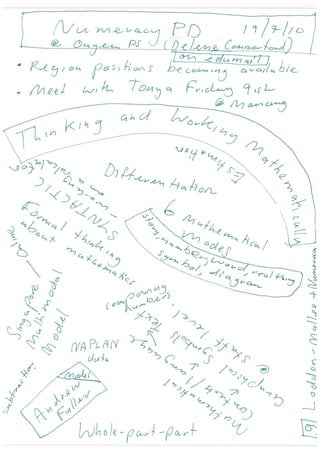

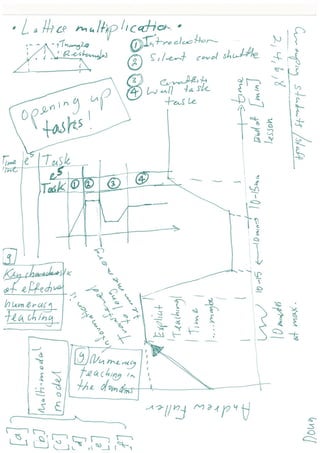
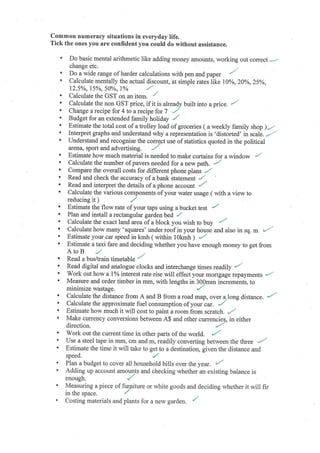
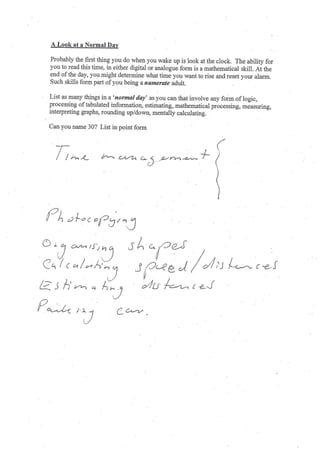
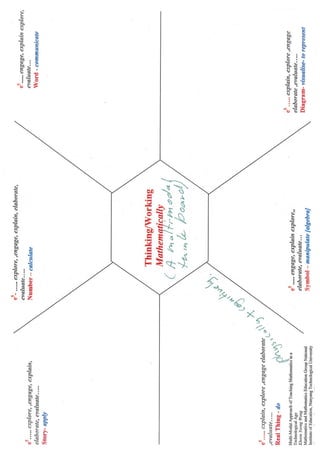
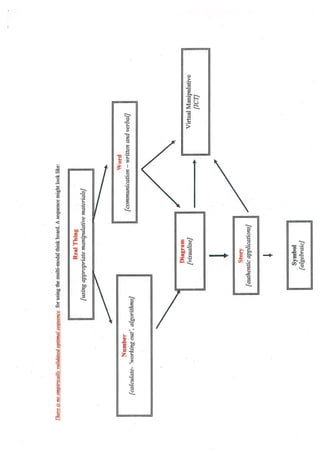
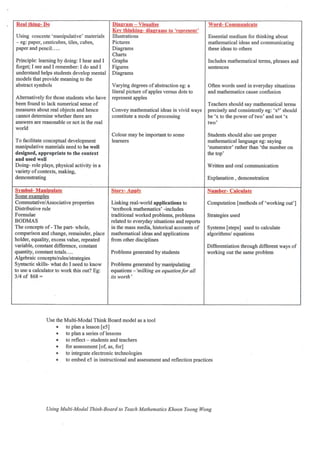
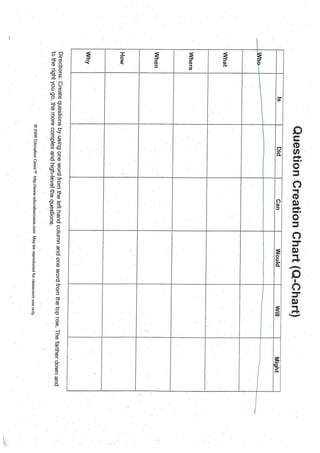
Ad
Recommended
Wedderburn College Newsletter 28th March 2012
Wedderburn College Newsletter 28th March 2012coburgmaths
╠²
The document provides information about upcoming parent-teacher-student interviews at Wedderburn College in Victoria, Australia. It discusses that the interviews will take place on March 29th in Wedderburn and March 28th in Inglewood to discuss student learning. It also mentions several other events happening at the end of the term like a casual day fundraiser and working bees planned for the start of next term.2011 Whole School Action Plan Curriculum PD Presentation
2011 Whole School Action Plan Curriculum PD Presentationcoburgmaths
╠²
This document outlines a curriculum professional development session focused on developing a whole school action plan. Key points discussed include:
- The session focused on improving understanding of the e5 framework and identifying different types of questioning.
- A whole school action plan was proposed to improve student learning outcomes through a collaborative approach focusing on areas like learning intentions, feedback, and higher-order questioning.
- Data was presented indicating the need for improvement, and professional learning teams would be formed to design inquiries around addressing this need through collaborative learning and feedback cycles.Ultranet booklet session 2
Ultranet booklet session 2coburgmaths
╠²
This document describes the features of an online platform called Ultranet, including a personalized home page for all users, an express page for personal space, a collaborative space for student learning and work, a community space, a professional development space for teachers, and a content storage and search area called "My content".Ultranet booklet
Ultranet bookletcoburgmaths
╠²
This document describes the features of an online platform called Ultranet, including a personalized home page for all users, an express page for personal space, a collaborative space for student learning and work, a community space, a professional development space for teachers, and a content storage and search area called "My content".Multi modal think board placemat
Multi modal think board placematcoburgmaths
╠²
This document discusses a multi-modal approach to teaching mathematics that involves exploring, engaging, explaining, elaborating and evaluating using different modes such as numbers, words, stories, real-life examples, symbols, diagrams, and thinking mathematically. It focuses on using calculation, communication, application, manipulation, visualization and strategies to teach mathematical concepts in a technological age.Multi modal think board details
Multi modal think board detailscoburgmaths
╠²
This document discusses using a multi-modal think board approach to teach mathematics. It involves using concrete manipulatives, diagrams, illustrations, pictures, charts and graphs to develop students' mental models and understanding of abstract mathematical concepts. Students learn by doing physical activities, making demonstrations, and using manipulatives like paper, cubes and tiles. Diagrams vary in abstraction from literal pictures to representations using dots. They convey ideas vividly. The multi-modal think board can be used for lesson planning, assessment, integrating technology, and reflecting on student and teacher learning.Thinking and working mathematically
Thinking and working mathematically coburgmaths
╠²
The document discusses using a multi-modal think board approach to teaching mathematics. It describes the six mathematical modes of thinking - number, word, diagram, symbol, real thing, and story. Examples are provided of how to differentiate mathematics instruction for students using open-ended questions within these six modes. The goal is to engage students in thinking and working mathematically in a variety of ways.e5 Ultranet PD Observations - Assessment
e5 Ultranet PD Observations - Assessmentcoburgmaths
╠²
Staff assessed a PD Vanaja and I delivered on the UltranetLinear equations part i
Linear equations part icoburgmaths
╠²
The document discusses linear equations and graphing lines. It covers plotting points, calculating slope, writing equations in slope-intercept form, and graphing lines by making a table or using the slope and y-intercept. Methods are presented for finding the equation of a line given two points, the slope and a point, or from a graph.Sam maths pres
Sam maths prescoburgmaths
╠²
The document discusses various types of transformations that can be performed on the graph of the function f(x)=logax. It explains that dilations on the x-axis are shown by coefficients in front of x in the equation, dilations on the y-axis by coefficients in front of the log term. Translations are shown by adding or subtracting terms from x or at the end of the equation for x-axis or y-axis translations respectively. Reflections are shown by changing the sign in front of terms or dividing the entire equation by 1. It also discusses finding degrees from radians and vice versa, finding intercepts of log equations, and determining the composition of two functions.Kim Solving
Kim Solvingcoburgmaths
╠²
This document provides instructions on how to solve various types of equations, including:
- Linear equations by rearranging to isolate the variable
- Equations using the null factor law to find zeros
- Exponential and logarithmic equations by equating exponents or rearranging into logarithmic form
- Logarithmic functions using properties of logarithms
- Using the "solve" command to solve equations on a calculator
- Circular function equations by rearranging to isolate the variable
It also provides examples and exercises to practice these techniques.Kim Modelling Functions
Kim Modelling Functionscoburgmaths
╠²
The document discusses different types of modeling involving functions. It provides examples of exponential, logarithmic, and circular functions where the variables or constants are missing and points on the graphs are given. Readers are instructed to find the values of the missing variables or constants by inserting the points into the corresponding function equations. Exercises from the textbook are assigned for practice.Aleesha guide to evaluating and converting
Aleesha guide to evaluating and convertingcoburgmaths
╠²
This document provides guidance on evaluating and converting between radians and degrees.
It defines conversion as changing the form of a quantity without changing its value. The angle in radians swept out in one revolution of a circle is 2ŽĆ radians (where ŽĆ radians = 180 degrees).
When converting between radians and degrees, the formula 1 degree = ŽĆ/180 radians is used. For example, to convert 30 degrees to radians, 30 ├Ś ŽĆ/180 = ŽĆ/6 radians.
Evaluation is defined as calculating the numerical value of an expression. Trigonometric functions are evaluated on the unit circle, where P(╬Ė) = (cos╬Ė, sin╬Ė) and symmetry properties allow determining values in eachSample Choc Chip Simulation Report Writing
Sample Choc Chip Simulation Report Writingcoburgmaths
╠²
1. The simulation involved modeling the making of chocolate chip cookies with a random number of chips in each cookie. Data was collected from 5 batches of 10 cookies each to determine the average number of chips used.
2. On average, 88.8 chips were needed per batch, with 19 chips wasted on average since the goal was 7 chips per cookie. Each cookie ended up having an average of 9 chips.
3. The simulation could have used a deck of cards instead of a calculator to generate random numbers by removing some cards and flipping them over randomly. This would allow modeling different chip requirements like 6 chips per cookie.Mathsmate Glossary
Mathsmate Glossarycoburgmaths
╠²
- The glossary defines key mathematical terms like accuracy, acute angle, addition, algebra, area, ascending order, and more.
- Definitions provide the meaning of each term along with visual examples to illustrate concepts like acute triangles, adjacent angles, and alternate interior angles.
- The glossary acts as a reference for mathematical vocabulary, concepts, properties, and notations.Stationary Points Handout
Stationary Points Handoutcoburgmaths
╠²
There are three types of stationary points: maximum points, minimum points, and points of inflection. A maximum point occurs when the gradient is positive on one side and negative on the other. A minimum point occurs when the gradient is negative on one side and positive on the other. A point of inflection occurs when the gradient is zero but the second derivative is also zero. To determine the type of stationary point, the gradient on each side is considered and the second derivative at that point is examined. Sketching the curve involves finding any stationary points, where the curve meets the axes, and using the information to plot the general shape.Equations of Tangents and Normals
Equations of Tangents and Normalscoburgmaths
╠²
This document provides questions about finding the equations of tangents and normals to various polynomial functions at given points. It contains 8 parts with multiple questions each about finding the equations of tangents to polynomial curves and normals to polynomial curves at specified points using differentiation.Differentiation of Polynomials Questions
Differentiation of Polynomials Questionscoburgmaths
╠²
This document provides 30 problems involving differentiating polynomials, where the task is to find the derivative (dy/dx) of each given polynomial function y=f(x). The polynomials range in degree from 1 to 4 and include both standard and fractional exponent terms. The problems are presented systematically to comprehensively cover the basic differentiation rules for polynomials.Stationary Points Questions
Stationary Points Questionscoburgmaths
╠²
The document provides instructions to find the stationary points and determine their nature for various polynomial functions including f(x) = 3x^2 - 12x + 5, f(x) = -x^2 - 4x + 8, and f(x) = 2x^2 - 4, as well as several other polynomial functions involving higher degree terms and multiple roots. Students are asked to analyze where the derivatives of each function are equal to 0 or undefined to find the coordinates of stationary points and then determine whether they are maxima, minima or points of inflection.PEST OF WHEAT SORGHUM BAJRA and MINOR MILLETS.pptx
PEST OF WHEAT SORGHUM BAJRA and MINOR MILLETS.pptxArshad Shaikh
╠²
Wheat, sorghum, and bajra (pearl millet) are susceptible to various pests that can significantly impact crop yields. Common pests include aphids, stem borers, shoot flies, and armyworms. Aphids feed on plant sap, weakening the plants, while stem borers and shoot flies damage the stems and shoots, leading to dead hearts and reduced growth. Armyworms, on the other hand, are voracious feeders that can cause extensive defoliation and grain damage. Effective management strategies, including resistant varieties, cultural practices, and targeted pesticide applications, are essential to mitigate pest damage and ensure healthy crop production.Pests of Maize: An comprehensive overview.pptx
Pests of Maize: An comprehensive overview.pptxArshad Shaikh
╠²
Maize is susceptible to various pests that can significantly impact yields. Key pests include the fall armyworm, stem borers, cob earworms, shoot fly. These pests can cause extensive damage, from leaf feeding and stalk tunneling to grain destruction. Effective management strategies, such as integrated pest management (IPM), resistant varieties, biological control, and judicious use of chemicals, are essential to mitigate losses and ensure sustainable maize production.More Related Content
More from coburgmaths (20)
Multi modal think board placemat
Multi modal think board placematcoburgmaths
╠²
This document discusses a multi-modal approach to teaching mathematics that involves exploring, engaging, explaining, elaborating and evaluating using different modes such as numbers, words, stories, real-life examples, symbols, diagrams, and thinking mathematically. It focuses on using calculation, communication, application, manipulation, visualization and strategies to teach mathematical concepts in a technological age.Multi modal think board details
Multi modal think board detailscoburgmaths
╠²
This document discusses using a multi-modal think board approach to teach mathematics. It involves using concrete manipulatives, diagrams, illustrations, pictures, charts and graphs to develop students' mental models and understanding of abstract mathematical concepts. Students learn by doing physical activities, making demonstrations, and using manipulatives like paper, cubes and tiles. Diagrams vary in abstraction from literal pictures to representations using dots. They convey ideas vividly. The multi-modal think board can be used for lesson planning, assessment, integrating technology, and reflecting on student and teacher learning.Thinking and working mathematically
Thinking and working mathematically coburgmaths
╠²
The document discusses using a multi-modal think board approach to teaching mathematics. It describes the six mathematical modes of thinking - number, word, diagram, symbol, real thing, and story. Examples are provided of how to differentiate mathematics instruction for students using open-ended questions within these six modes. The goal is to engage students in thinking and working mathematically in a variety of ways.e5 Ultranet PD Observations - Assessment
e5 Ultranet PD Observations - Assessmentcoburgmaths
╠²
Staff assessed a PD Vanaja and I delivered on the UltranetLinear equations part i
Linear equations part icoburgmaths
╠²
The document discusses linear equations and graphing lines. It covers plotting points, calculating slope, writing equations in slope-intercept form, and graphing lines by making a table or using the slope and y-intercept. Methods are presented for finding the equation of a line given two points, the slope and a point, or from a graph.Sam maths pres
Sam maths prescoburgmaths
╠²
The document discusses various types of transformations that can be performed on the graph of the function f(x)=logax. It explains that dilations on the x-axis are shown by coefficients in front of x in the equation, dilations on the y-axis by coefficients in front of the log term. Translations are shown by adding or subtracting terms from x or at the end of the equation for x-axis or y-axis translations respectively. Reflections are shown by changing the sign in front of terms or dividing the entire equation by 1. It also discusses finding degrees from radians and vice versa, finding intercepts of log equations, and determining the composition of two functions.Kim Solving
Kim Solvingcoburgmaths
╠²
This document provides instructions on how to solve various types of equations, including:
- Linear equations by rearranging to isolate the variable
- Equations using the null factor law to find zeros
- Exponential and logarithmic equations by equating exponents or rearranging into logarithmic form
- Logarithmic functions using properties of logarithms
- Using the "solve" command to solve equations on a calculator
- Circular function equations by rearranging to isolate the variable
It also provides examples and exercises to practice these techniques.Kim Modelling Functions
Kim Modelling Functionscoburgmaths
╠²
The document discusses different types of modeling involving functions. It provides examples of exponential, logarithmic, and circular functions where the variables or constants are missing and points on the graphs are given. Readers are instructed to find the values of the missing variables or constants by inserting the points into the corresponding function equations. Exercises from the textbook are assigned for practice.Aleesha guide to evaluating and converting
Aleesha guide to evaluating and convertingcoburgmaths
╠²
This document provides guidance on evaluating and converting between radians and degrees.
It defines conversion as changing the form of a quantity without changing its value. The angle in radians swept out in one revolution of a circle is 2ŽĆ radians (where ŽĆ radians = 180 degrees).
When converting between radians and degrees, the formula 1 degree = ŽĆ/180 radians is used. For example, to convert 30 degrees to radians, 30 ├Ś ŽĆ/180 = ŽĆ/6 radians.
Evaluation is defined as calculating the numerical value of an expression. Trigonometric functions are evaluated on the unit circle, where P(╬Ė) = (cos╬Ė, sin╬Ė) and symmetry properties allow determining values in eachSample Choc Chip Simulation Report Writing
Sample Choc Chip Simulation Report Writingcoburgmaths
╠²
1. The simulation involved modeling the making of chocolate chip cookies with a random number of chips in each cookie. Data was collected from 5 batches of 10 cookies each to determine the average number of chips used.
2. On average, 88.8 chips were needed per batch, with 19 chips wasted on average since the goal was 7 chips per cookie. Each cookie ended up having an average of 9 chips.
3. The simulation could have used a deck of cards instead of a calculator to generate random numbers by removing some cards and flipping them over randomly. This would allow modeling different chip requirements like 6 chips per cookie.Mathsmate Glossary
Mathsmate Glossarycoburgmaths
╠²
- The glossary defines key mathematical terms like accuracy, acute angle, addition, algebra, area, ascending order, and more.
- Definitions provide the meaning of each term along with visual examples to illustrate concepts like acute triangles, adjacent angles, and alternate interior angles.
- The glossary acts as a reference for mathematical vocabulary, concepts, properties, and notations.Stationary Points Handout
Stationary Points Handoutcoburgmaths
╠²
There are three types of stationary points: maximum points, minimum points, and points of inflection. A maximum point occurs when the gradient is positive on one side and negative on the other. A minimum point occurs when the gradient is negative on one side and positive on the other. A point of inflection occurs when the gradient is zero but the second derivative is also zero. To determine the type of stationary point, the gradient on each side is considered and the second derivative at that point is examined. Sketching the curve involves finding any stationary points, where the curve meets the axes, and using the information to plot the general shape.Equations of Tangents and Normals
Equations of Tangents and Normalscoburgmaths
╠²
This document provides questions about finding the equations of tangents and normals to various polynomial functions at given points. It contains 8 parts with multiple questions each about finding the equations of tangents to polynomial curves and normals to polynomial curves at specified points using differentiation.Differentiation of Polynomials Questions
Differentiation of Polynomials Questionscoburgmaths
╠²
This document provides 30 problems involving differentiating polynomials, where the task is to find the derivative (dy/dx) of each given polynomial function y=f(x). The polynomials range in degree from 1 to 4 and include both standard and fractional exponent terms. The problems are presented systematically to comprehensively cover the basic differentiation rules for polynomials.Stationary Points Questions
Stationary Points Questionscoburgmaths
╠²
The document provides instructions to find the stationary points and determine their nature for various polynomial functions including f(x) = 3x^2 - 12x + 5, f(x) = -x^2 - 4x + 8, and f(x) = 2x^2 - 4, as well as several other polynomial functions involving higher degree terms and multiple roots. Students are asked to analyze where the derivatives of each function are equal to 0 or undefined to find the coordinates of stationary points and then determine whether they are maxima, minima or points of inflection.Recently uploaded (20)
PEST OF WHEAT SORGHUM BAJRA and MINOR MILLETS.pptx
PEST OF WHEAT SORGHUM BAJRA and MINOR MILLETS.pptxArshad Shaikh
╠²
Wheat, sorghum, and bajra (pearl millet) are susceptible to various pests that can significantly impact crop yields. Common pests include aphids, stem borers, shoot flies, and armyworms. Aphids feed on plant sap, weakening the plants, while stem borers and shoot flies damage the stems and shoots, leading to dead hearts and reduced growth. Armyworms, on the other hand, are voracious feeders that can cause extensive defoliation and grain damage. Effective management strategies, including resistant varieties, cultural practices, and targeted pesticide applications, are essential to mitigate pest damage and ensure healthy crop production.Pests of Maize: An comprehensive overview.pptx
Pests of Maize: An comprehensive overview.pptxArshad Shaikh
╠²
Maize is susceptible to various pests that can significantly impact yields. Key pests include the fall armyworm, stem borers, cob earworms, shoot fly. These pests can cause extensive damage, from leaf feeding and stalk tunneling to grain destruction. Effective management strategies, such as integrated pest management (IPM), resistant varieties, biological control, and judicious use of chemicals, are essential to mitigate losses and ensure sustainable maize production.Sustainable Innovation with Immersive Learning
Sustainable Innovation with Immersive LearningLeonel Morgado
╠²
Prof. Leonel and Prof. Dennis approached educational uses, practices, and strategies of using immersion as a lens to interpret, design, and planning educational activities in a sustainable way. Rather than one-off gimmicks, the intent is to enable instructors (and institutions) to be able to include them in their regular activities, including the ability to evaluate and redesign them.
Immersion as a phenomenon enables interpreting pedagogical activities in a learning-agnostic way: you take a stance on the learning theory to follow, and leverage immersion to envision and guide your practice.How to Manage Different Customer Addresses in Odoo 18 Accounting
How to Manage Different Customer Addresses in Odoo 18 AccountingCeline George
╠²
A business often have customers with multiple locations such as office, warehouse, home addresses and this feature allows us to associate with different addresses with each customer streamlining the process of creating sales order invoices and delivery orders.THE PSYCHOANALYTIC OF THE BLACK CAT BY EDGAR ALLAN POE (1).pdf
THE PSYCHOANALYTIC OF THE BLACK CAT BY EDGAR ALLAN POE (1).pdfnabilahk908
╠²
Psychoanalytic Analysis of The Black Cat by Edgar Allan Poe explores the deep psychological dimensions of the narratorŌĆÖs disturbed mind through the lens of Sigmund FreudŌĆÖs psychoanalytic theory. According to Freud (1923), the human psyche is structured into three components: the Id, which contains primitive and unconscious desires; the Ego, which operates on the reality principle and mediates between the Id and the external world; and the Superego, which reflects internalized moral standards.
In this story, Poe presents a narrator who experiences a psychological breakdown triggered by repressed guilt, aggression, and internal conflict. This analysis focuses not only on the gothic horror elements of the narrative but also on the narratorŌĆÖs mental instability and emotional repression, demonstrating how the imbalance of these three psychic forces contributes to his downfall.LDMMIA Practitioner Level Orientation Updates
LDMMIA Practitioner Level Orientation UpdatesLDM & Mia eStudios
╠²
See our 2 Starter PDFs within a Compressed, Zip Drive. Within Shop. Videos will be available Before the Weekend of 6/14th. For the US, Happy Fathers Day Weekend. (Our readers/teams are global.) Also, our content remains timeless for Future Grad Students seeking updates.
After about a Year or 10, I retire older content. Literally up to under 10 yrs. We will be 19 yrs old this Aug for Love and Divinity in Motion (LDM). How old are we? So funny. Our oldest profile is X, formerly Twitter. From our old Apple Podcast Years.
https://ldm-mia.creator-spring.com
Session/Lesson 1 -Intro
REIKI- YOGA ŌĆ£ORIENTATIONŌĆØ
It helps to understand the text behind anything. This improves our performance and confidence.
Your training will be mixed media. Includes Rehab Intro and Meditation vods, all sold separately.
Editing our Vods & New Shop. Retail under $30 per item.
*Store Fees will apply. *Digital Should be low cost.
Thank you for attending our free workshops. Those can be used with any Reiki Yoga training package. Traditional Reiki does host rules and ethics. Its silent and within the JP Culture/Area/Training/Word of Mouth. It allows remote healing but thereŌĆÖs limits for practitioners and masters. We are not allowed to share certain secrets/tools. Some content is designed only for ŌĆ£MastersŌĆØ...
Next Upload will be our Video package for Session 1. Prices will be affordable as possible. Thx for becoming a "Practitioner Level" Student.
Updates so far, are every week for spring. Summer should be a similar schedule. Thx for visitings, attending, and following LDMMIA.
Social Media:
https://x.com/OnlineDrLeZ
and
https://www.instagram.com/chelleofsl/
ECONOMICS, DISASTER MANAGEMENT, ROAD SAFETY - STUDY MATERIAL [10TH]
ECONOMICS, DISASTER MANAGEMENT, ROAD SAFETY - STUDY MATERIAL [10TH]SHERAZ AHMAD LONE
╠²
This study material for Class 10th covers the core subjects of Economics, Disaster Management, and Road Safety Education, developed strictly in line with the JKBOSE textbook. It presents the content in a simplified, structured, and student-friendly format, ensuring clarity in concepts. The material includes reframed explanations, flowcharts, infographics, and key point summaries to support better understanding and retention. Designed for classroom teaching and exam preparation, it aims to enhance comprehension, critical thinking, and practical awareness among students.Birnagar High School Platinum Jubilee Quiz.pptx
Birnagar High School Platinum Jubilee Quiz.pptxSourav Kr Podder
╠²
Birnagar High School Platinum Jubilee Celebration QuizPublishing Your Memoir with Brooke Warner
Publishing Your Memoir with Brooke WarnerBrooke Warner
╠²
Brooke Warner presents on getting published - traditional, hybrid, and self-publishing.
www.memoirnation.comPlate Tectonic Boundaries and Continental Drift Theory
Plate Tectonic Boundaries and Continental Drift TheoryMarie
╠²
This 28 slide presentation covers the basics of plate tectonics and continental drift theory. It is an effective introduction into a full plate tectonics unit study, but does not cover faults, stress, seismic waves, or seafloor spreading.
To download PDF, visit The Homeschool Daily. We will be uploading more slideshows to follow this one. Blessings, Marie This is why students from these 44 institutions have not received National Se...
This is why students from these 44 institutions have not received National Se...Kweku Zurek
╠²
This is why students from these 44 institutions have not received National Service PIN codes (LIST)Battle of Bookworms 2025 - U25 Literature Quiz by Pragya
Battle of Bookworms 2025 - U25 Literature Quiz by Pragya Pragya - UEM Kolkata Quiz Club
╠²
Battle of Bookworms is a literature quiz organized by Pragya, UEM Kolkata, as part of their cultural fest Ecstasia. Curated by quizmasters Drisana Bhattacharyya, Argha Saha, and Aniket Adhikari, the quiz was a dynamic mix of classical literature, modern writing, mythology, regional texts, and experimental literary forms. It began with a 20-question prelim round where ŌĆśstar questionsŌĆÖ played a key tie-breaking role. The top 8 teams moved into advanced rounds, where they faced audio-visual challenges, pounce/bounce formats, immunity tokens, and theme-based risk-reward questions. From Orwell and Hemingway to Tagore and Sarala Das, the quiz traversed a global and Indian literary landscape. Unique rounds explored slipstream fiction, constrained writing, adaptations, and true crime literature. It included signature IDs, character identifications, and open-pounce selections. Questions were crafted to test contextual understanding, narrative knowledge, and authorial intent, making the quiz both intellectually rewarding and culturally rich. Battle of Bookworms proved literature quizzes can be insightful, creative, and deeply enjoyable for all.BINARY files CSV files JSON files with example.pptx
BINARY files CSV files JSON files with example.pptxRamakrishna Reddy Bijjam
╠²
BINARY FILES, CSV FILESHealth Care Planning and Organization of Health Care at Various Levels ŌĆō Unit...
Health Care Planning and Organization of Health Care at Various Levels ŌĆō Unit...RAKESH SAJJAN
╠²
This comprehensive PowerPoint presentation is prepared for B.Sc Nursing 5th Semester students and covers Unit 2 of Community Health Nursing ŌĆō I based on the Indian Nursing Council (INC) syllabus. The unit focuses on the planning, structure, and functioning of health care services at various levels in India. It is especially useful for nursing educators and students preparing for university exams, internal assessments, or professional teaching assignments.
The content of this presentation includes:
Historical development of health planning in India
Detailed study of various health committees: Bhore, Mudaliar, Kartar Singh, Shrivastava Committee, etc.
Overview of major health commissions
In-depth understanding of Five-Year Plans and their impact on health care
Community participation and stakeholder involvement in health care planning
Structure of health care delivery system at central, state, district, and peripheral levels
Concepts and implementation of Primary Health Care (PHC) and Sustainable Development Goals (SDGs)
Introduction to Comprehensive Primary Health Care (CPHC) and Health and Wellness Centers (HWCs)
Expanded role of Mid-Level Health Providers (MLHPs) and Community Health Providers (CHPs)
Explanation of national health policies: NHP 1983, 2002, and 2017
Key national missions and schemes including:
National Health Mission (NHM)
National Rural Health Mission (NRHM)
National Urban Health Mission (NUHM)
Ayushman Bharat ŌĆō Pradhan Mantri Jan Arogya Yojana (PM-JAY)
Universal Health Coverage (UHC) and IndiaŌĆÖs commitment to equitable health care
This presentation is ideal for:
Nursing students (B.Sc, GNM, Post Basic)
Nursing tutors and faculty
Health educators
Competitive exam aspirants in nursing and public health
It is organized in a clear, point-wise format with relevant terminologies and a focus on applied knowledge. The slides can also be used for community health demonstrations, teaching sessions, and revision guides.Communicable Diseases and National Health Programs ŌĆō Unit 9 | B.Sc Nursing 5t...
Communicable Diseases and National Health Programs ŌĆō Unit 9 | B.Sc Nursing 5t...RAKESH SAJJAN
╠²
This PowerPoint presentation covers Unit 9 ŌĆō Communicable Diseases and National Health Programs, a core part of the 5th Semester B.Sc Nursing (Community Health Nursing ŌĆō I) syllabus, as outlined by the Indian Nursing Council (INC).
This unit enables nursing students to understand the epidemiology, prevention, control, and nursing management of common communicable diseases in India, while also offering a structured overview of the National Health Programs implemented to address them.
The content is critical for effective field practice, disease surveillance, early detection, referral, and health education, equipping students to participate in public health interventions and outbreak control at community and national levels.
¤ōś Key Topics Covered in the PPT:
Definition and classification of communicable diseases
Modes of transmission and chain of infection
Common communicable diseases in India:
Malaria
Tuberculosis
Leprosy
Dengue
HIV/AIDS
Hepatitis
COVID-19 (if included in the current curriculum)
Diarrheal diseases
Acute Respiratory Infections (ARIs)
Epidemiological factors, causative agents, symptoms, and incubation periods
Prevention and control strategies: primary, secondary, and tertiary levels
Nursing responsibilities in patient care, contact tracing, community surveillance, and outbreak control
Health education and behavior change communication for community awareness
Vaccination schedules and cold chain maintenance
National Health Programs related to communicable diseases:
National Vector Borne Disease Control Program (NVBDCP)
Revised National Tuberculosis Control Program (RNTCP)
National Leprosy Eradication Program (NLEP)
National AIDS Control Program (NACP)
Universal Immunization Program (UIP)
IDSP ŌĆō Integrated Disease Surveillance Program
Overview of standard treatment protocols, referral mechanisms, and community nurseŌĆÖs role in program implementation
This presentation is ideal for:
Nursing students preparing for university exams, class tests, and field projects
Tutors teaching infectious disease nursing and public health interventions
Nurses involved in immunization, outbreak investigation, and contact tracing
It provides a student-friendly breakdown of concepts, aligned with national priorities, including flowcharts, tables, case examples, and simplified text for field-level application.Q1_ENGLISH_PPT_WEEK 1 power point grade 3 Quarter 1 week 1
Q1_ENGLISH_PPT_WEEK 1 power point grade 3 Quarter 1 week 1jutaydeonne
╠²
Grade 3 Quarter 1 Week 1 English part 2Gibson "Secrets to Changing Behaviour in Scholarly Communication: A 2025 NISO...
Gibson "Secrets to Changing Behaviour in Scholarly Communication: A 2025 NISO...National Information Standards Organization (NISO)
╠²
This presentation was provided by Jennifer Gibson of Dryad, during the second session of our 2025 NISO training series "Secrets to Changing Behavior in Scholarly Communications." Session Two was held June 12, 2025.GEOGRAPHY-Study Material [ Class 10th] .pdf
GEOGRAPHY-Study Material [ Class 10th] .pdfSHERAZ AHMAD LONE
╠²
"Geography Study Material for Class 10th" provides a comprehensive and easy-to-understand resource for key topics like Resources & Development, Water Resources, Agriculture, Minerals & Energy, Manufacturing Industries, and Lifelines of the National Economy. Designed as per the latest NCERT/JKBOSE syllabus, it includes notes, maps, diagrams, and MODEL question Paper to help students excel in exams. Whether revising for exams or strengthening conceptual clarity, this material ensures effective learning and high scores. Perfect for last-minute revisions and structured study sessions.Paper 108 | ThoreauŌĆÖs Influence on Gandhi: The Evolution of Civil Disobedience
Paper 108 | ThoreauŌĆÖs Influence on Gandhi: The Evolution of Civil DisobedienceRajdeep Bavaliya
╠²
Dive into the powerful journey from ThoreauŌĆÖs 19thŌĆæcentury essay to GandhiŌĆÖs mass movement, and discover how one manŌĆÖs moral stand became the backbone of nonviolent resistance worldwide. Learn how conscience met strategy to spark revolutions, and why their legacy still inspires todayŌĆÖs social justice warriors. Uncover the evolution of civil disobedience. DonŌĆÖt forget to like, share, and follow for more deep dives into the ideas that changed the world.
M.A. Sem - 2 | Presentation
Presentation Season - 2
Paper - 108: The American Literature
Submitted Date: April 2, 2025
Paper Name: The American Literature
Topic: ThoreauŌĆÖs Influence on Gandhi: The Evolution of Civil Disobedience
[Please copy the link and paste it into any web browser to access the content.]
Video Link: https://youtu.be/HXeq6utg7iQ
For a more in-depth discussion of this presentation, please visit the full blog post at the following link: https://rajdeepbavaliya2.blogspot.com/2025/04/thoreau-s-influence-on-gandhi-the-evolution-of-civil-disobedience.html
Please visit this blog to explore additional presentations from this season:
Hashtags:
#CivilDisobedience #ThoreauToGandhi #NonviolentResistance #Satyagraha #Transcendentalism #SocialJustice #HistoryUncovered #GandhiLegacy #ThoreauInfluence #PeacefulProtest
Keyword Tags:
civil disobedience, Thoreau, Gandhi, Satyagraha, nonviolent protest, transcendentalism, moral resistance, Gandhi Thoreau connection, social change, political philosophyGibson "Secrets to Changing Behaviour in Scholarly Communication: A 2025 NISO...
Gibson "Secrets to Changing Behaviour in Scholarly Communication: A 2025 NISO...National Information Standards Organization (NISO)
╠²
Ad